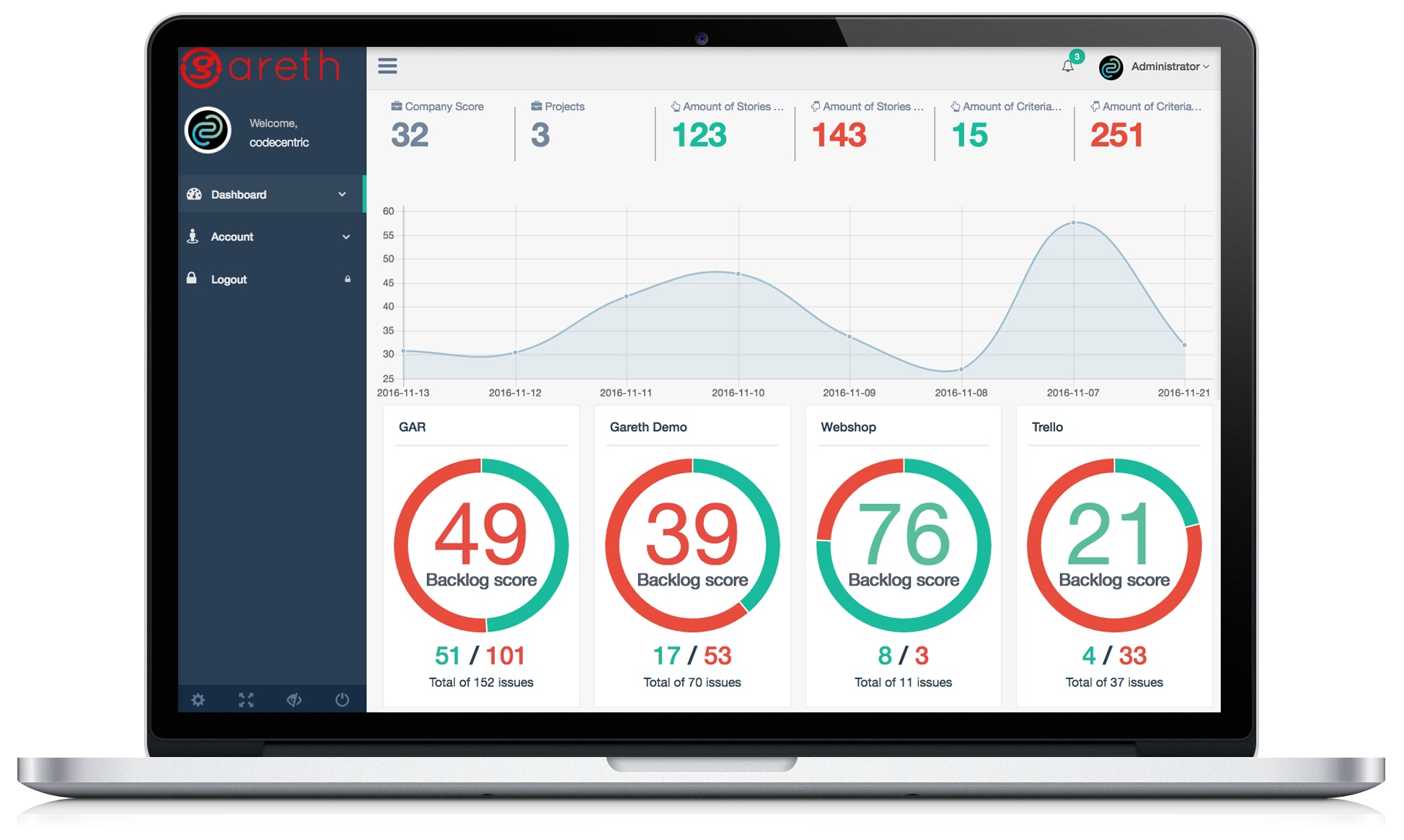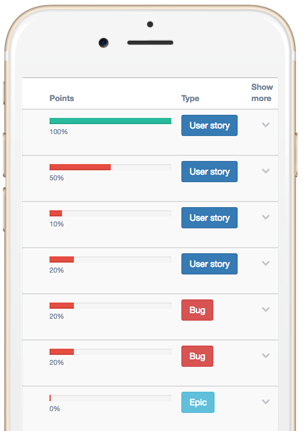

The beauty of a user story is that it describes a lot in little space. An effective way of tracking requirements. It describes the persona for which the solution is made, the desired outcome and most importantly the problem that needs to be solved.
But what if the stories on a backlog do not have this proper description? How can we expect the end result, the working software, to do what we expected? Gareth backlog validation provides insights about the quality of both individual backlogs and the product portfolio status.

By measuring and reporting over the quality of both the individual backlogs as well as the overall portfolio, companies can control their requirement processes. Gareth backlog validation provides an overview of the current status as well the improvement over time.
Teams can now be sure that the quality of user stories to be refined and built match up to their definition-of-ready. No more long demotivating meetings with badly prepared input, but short effective and energizing sprint planning meetings.
Product owners need to make sure that the highest priority stories follow company conventions. That way these stories can be estimated and built by the development teams. Gareth gives precise insights in the current status of the backlog and the amount of well defined items for following sprints.
Gareth gives a clear and concise overview of the current status and the improvement over time. Reporting is done over the quality of both the individual backlogs as well as the overall product portfolio.
Gareth backlog validation is highly configurable. Multiple issue and project tracking systems like Jira, Trello, Github and Pivotal Tracker are supported with more to follow. Gareth distinguishes multiple issue types with their own characteristics.
For each of these issue types the threshold, the criteria and importance can be configured so the results reflect the desired way of working. This way teams have the capability to set up and enforce their company’s standards regarding requirements.

Gareths backlog validation creates a concise ranking for your backlog based on the relative importance of your issues. This means that issues in the top of the backlog are weighted more heavily compared to the ones at the bottom. The actual setting is configurable. There are alerts whenever a backlog doesn't meet the quality gate.
Gareth's smart text parsing even enables you to extract issue and criteria content from large free-text fields. This makes it easy to implement in established backlogs or tools with limited custom field support.
Gareth can easily be used as part of the CI environment by integration in CI pipelines and Jenkins dashboards.